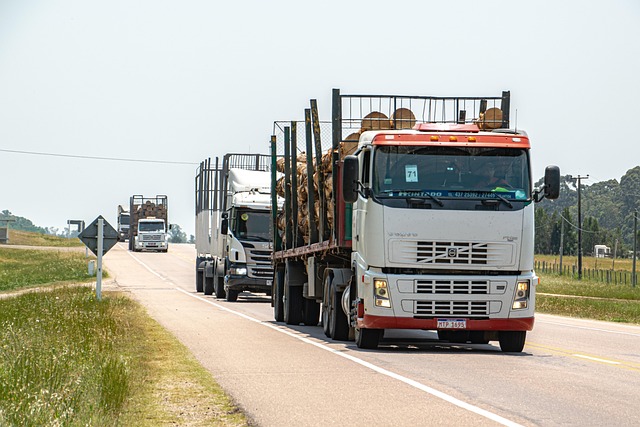Looking to register your car in California? Navigating the process can seem daunting, but it’s a crucial step to ensure legal operation on state roads. This guide breaks down the essential steps, from understanding key requirements to utilizing a VIN verifier to confirm your vehicle’s authenticity. By following these straightforward procedures, you’ll be cruising smoothly through the registration process in no time, ensuring compliance and peace of mind.
- Understand California Car Registration Requirements
- Gather Necessary Documents for Vehicle Registration
- Check Your Vehicle's Eligibility for Registration
- Use VIN Verifier to Ensure Authenticity of Your Vehicle
- Complete and Submit Your Car Registration Application
Understand California Car Registration Requirements

Before registering your car in California, it’s crucial to understand the state’s specific requirements for vehicle identification number (VIN) verification. The California Department of Motor Vehicles (DMV) mandates that all vehicles, regardless of age, be registered and have their VIN checked to ensure authenticity and prevent fraud. This process is typically handled through a mobile VIN inspection or using a reliable mobile VIN verifier app.
California accepts mobile VIN verification services, which offer a convenient way to confirm your vehicle’s history and specifications. These services utilize advanced technology to cross-reference your car’s VIN with national databases, providing the DMV with the necessary information for registration. This alternative to traditional VIN inspection can save you time and effort, especially when dealing with older or imported vehicles that may require additional documentation.
Gather Necessary Documents for Vehicle Registration

Before you can register your car in California, you’ll need to gather several important documents. The process is designed to ensure that all vehicles on the road meet safety and environmental standards. One crucial document is the Vehicle Identification Number (VIN) verifier, which can be obtained through a mobile VIN verification service or by conducting a VIN inspection yourself. These services enable you to check the vehicle’s history, including any previous accidents or outstanding issues, using your smartphone.
Additionally, you’ll require proof of ownership, typically a bill of sale or a title document, and current registration from another state if you’re transferring the registration. Ensure that all documents are valid and up-to-date to streamline the registration process at a California Department of Motor Vehicles (DMV) office.
Check Your Vehicle's Eligibility for Registration

Before you can register your car in California, you’ll need to ensure that your vehicle meets the state’s eligibility criteria. One crucial step is checking your vehicle identification number (VIN) using a reliable VIN verifier. The California Department of Motor Vehicles (DMV) recommends utilizing a mobile VIN verifier or conducting a basic online check to verify if your car is eligible for registration.
This verification process is essential as it helps ensure that your vehicle has been properly manufactured, isn’t on any outstanding recalls, and meets all safety standards set by the state. A simple VIN inspection can be done quickly with the help of various mobile vin verification apps or services, making it a straightforward and convenient step in the registration process.
Use VIN Verifier to Ensure Authenticity of Your Vehicle

Before proceeding with registration, it’s crucial to ensure your vehicle’s authenticity using a reliable method like a vin verifier. This process verifies the Vehicle Identification Number (VIN) and checks for any discrepancies or signs of tampering. A trusted mobile vin inspection service can perform this check remotely, offering convenience and saving you a trip to a dealership or registration center.
By utilizing a mobile vin verifier, you gain access to a quick and efficient way to validate your vehicle’s history and ownership, which is a vital step in the registration process. This ensures that the car you’re registering is genuine and has not been reported stolen or had any suspicious modifications made.
Complete and Submit Your Car Registration Application

After gathering all necessary documents, it’s time to complete and submit your California car registration application. This process involves filling out Form DV-140, which can be obtained online or at a local DMV office. Make sure to include accurate and up-to-date information about your vehicle, such as the make, model, year, and VIN (Vehicle Identification Number). The VIN is crucial for identification purposes and can be easily verified through a mobile vin verification or vin inspection service, ensuring both accuracy and convenience.
When completing the application, double-check all details to avoid delays in processing. You can either submit the form online or mail it to the DMV, depending on your preference. If you opt for a physical submission, ensure you visit a designated DMV office during their operational hours. Keep in mind that timely submission is essential to maintain your vehicle’s registration and avoid any legal consequences.
Registering a car in California involves understanding key requirements, gathering essential documents, verifying vehicle eligibility, and completing an application. Utilize a VIN verifier to ensure your vehicle’s authenticity, which is crucial for a seamless registration process. By adhering to these steps, you can successfully navigate the car registration process in California.
